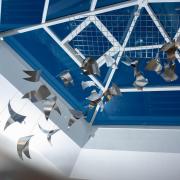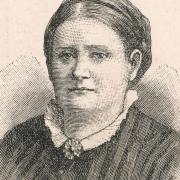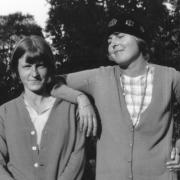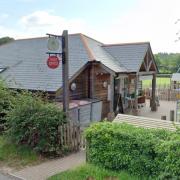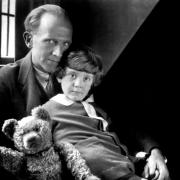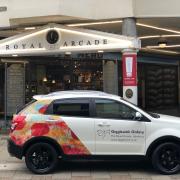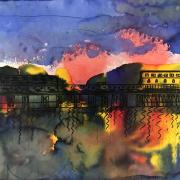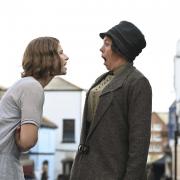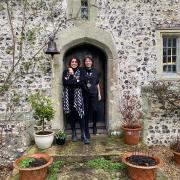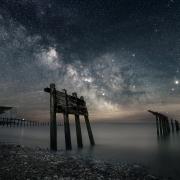With the Turner Prize heading to Towner Eastbourne, a new space celebrating Charleston’s Vanessa Bell and Duncan Grant opening in Lewes and more surprises from Sussex Modern on the horizon, the county is making its mark on the artistic and cultural world map. Rebecca Pitcairn talks to Charleston CEO and Sussex Modern chair Nathaniel Hepburn
All eyes of the art world will be firmly focused on the East Sussex coast this month when The Turner Prize, the world’s leading competition for contemporary art, heads to Towner Eastbourne as the centrepiece of the seaside gallery’s centenary celebrations.
Established in 1984, The Turner Prize is awarded to a British artist for an outstanding exhibition or other presentation of their work in the last 12 months – previous winners have included Sir Anish Kapoor, Damien Hirst and Veronica Ryan. It will be the first time the competition, named after English Romantic landscape artist J W Turner, whose painting of Chichester Canal is in the Tate, has ever been held in Sussex.

However, Eastbourne isn’t the only East Sussex town that will be celebrating a monumental art milestone this September. The world-renowned cultural institution and former country home of Virginia Woolf’s sister, Vanessa Bell, and her friend, lover and fellow artist, Duncan Grant, will open a new contemporary cultural space in the heart of Lewes.
Charleston opened to the public in 1986 and today welcomes visitors from around the world to its rural site, in Firle, to experience the extraordinary house and studio, which was regularly frequented by the Bloomsbury Group.
‘The farmhouse dates back to the 16th century and was lived in by two of the most important modernist artists of the last century, Vanessa Bell and Duncan Grant, who moved here in 1916 and were there until the end of their lives,’ explains Charleston chief executive, Nathaniel Hepburn, who joined the charity in 2017. ‘Over that 60-year period the two of them decorated and transformed the whole of the house into a complete work of art. But it's not just a beautifully painted and curated house, it was also a place where great thinkers and radical pioneers, such as Virginia Woolf, the great economist John Maynard Keynes, TS Eliot and EM Forster, came together as a meeting space, gathered around the dining table and imagined society differently ¬ artistically, socially, politically and sexually differently. It was a household that 100 years later we'd describe as a ‘chosen family’ or ‘queer community’.’

A programme of critically-acclaimed exhibitions and the renowned Charleston Festival, founded in 1990, has attracted visitors from across the globe for decades. But, because the house isn’t in the most easily accessible location, the charity has partnered with Lewes District Council to use their former offices in Southover Road as a more central base.
‘Charleston is just off the A27, but you have to drive to it, you have to seek it out,’ says Nathaniel, 42. ‘The new space overlooks Lewes Railway Station in the heart of the county town, it’s within 10 minutes’ walk from 8,000 young people in schools, colleges and universities, and that just opens up our ability to engage with broader communities, those that wouldn't necessarily think that that Charleston was for them.’
READ MORE: A haunting glimpse into a lost past at Charleston
The new space in Lewes, which will house Charleston’s full collection as well as a learning and community engagement centre, will open with a pop-up shop, café and major exhibition Bring No Clothes: Bloomsbury and Fashion, featuring catwalk fashion by the likes of Dior, Fendi and Burberry alongside personal items including Virginia Woolf’s handbag embroidered by Vanessa Bell.

A future partnership with the National Portrait Gallery, the V&A and Tate will also aim to bring 100 of the most important Bloomsbury works back to Lewes as a major draw to the town.‘During the pop-up period, we also really want to talk with Lewes residents about how they see this cultural centre working for Lewes and what they think should be in the building, which has been a civic building ever since it was built in 1939,’ says Nathaniel. “Apart from to deal with bureaucratic matters most people won't have really experienced this building and it’s a big space so there are lots of opportunities for ideas to evolve.’
The opportunity to bring more people down from London and other areas of the UK to experience what Sussex has to offer is a major coup for Nathaniel, who is also chair of Sussex Modern, the independent business consortium which was formed in 2017 to promote the county’s visitor economy.
‘Before Sussex Modern, there wasn’t a single marketing organization promoting Sussex as a whole,’ he says. ‘The work of generating tourism is delegated down to the local authorities, to the districts and boroughs councils so we have Visit Eastbourne, The Great Sussex Way; Hastings has got the amazing 1066 Country and there’s Visit Brighton and many other smaller town-based marketing organizations but there isn't a single Sussex Tourism office.’
At the time, Nathaniel was working as director of Ditchling Museum of Arts + Crafts and was helping to coordinate a group of nine Sussex museums to come together for an exhibition in London’s 2 Temple Place called Sussex Modernism Retreat and Rebellion.

‘The exhibition was curated by Dr Hope Wolf, from the University of Sussex, and told the story of how and why artists in the 20th century came to Sussex to live and work,’ explains Nathaniel, who studied history at the University of Essex in Colchester and spent the first years of his career, specialising in 20th century British art. ‘It looked at the Bloomsbury Group, at Eric Ravilious, Peggy Angus, at surrealism and people like Lee Miller, Roland Penrose, and the collector and patron Edward James over in West Sussex at West Dean. It was an incredible success, attracted huge press coverage and, on the back of it, we got a small Arts Council grant to ensure that all of those exhibition visitors came back to our venues in Sussex. That was the starting point for Sussex Modern.’
Since then Sussex Modern has evolved to incorporate and celebrate one of Sussex’s other great cultural success stories – English wine.‘We have become the kind of pan Sussex tourism organization with a mixture of private and public funding delivering campaigns and building awareness for Sussex as a place where you get award-winning wines, world class culture and breathtaking landscapes,’ he explains.
Having lived in Eastbourne for more than 10 years, Nathaniel has a particular soft spot for the town.‘A decade ago, when you said you lived in Eastbourne, that sort of raised eyebrows in not an altogether positive way. It wasn’t a town that was associated with a lively culture,’ he admits. “Now when you say that you live in Eastbourne, there's a kind of spark of recognition of this place, as somewhere with great places to eat and drink, and great walks and cycle routes up across the Downs.’
With The Turner Prize exhibition running from September until April 2024, there will be plenty of opportunity for both residents and visitors to experience the town’s cultural delights.

‘There will be a Fringe-style arts programme, called Eastbourne Alive. There will be commissions displayed across the town with exhibitions in hotels, cafes and shops, so that the opportunity to see this great art prize is experienced by everyone in the town,’ he smiles. ‘What better way is there to celebrate 100 years of bringing contemporary art to Eastbourne?’
Charleston Lewes opens to the public on Wednesday September 13. For more visit charleston.org.uk or sussexmodern.org.uk




